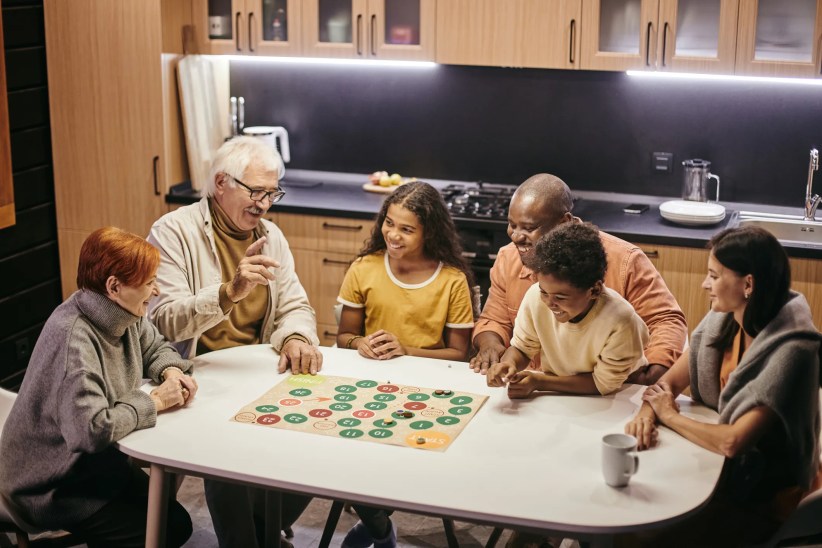 With easy access to scads of family-friendly museums, restaurants, stores, and parks, there are so many advantages to raising your kids in New York. But that doesn’t mean city families don’t have to make some sacrifices. And more often than not, one of those sacrifices is having a big backyard of their own. But even if you don’t have a private lawn, that doesn’t mean your family can’t enjoy the best of spring’s blossoms. Whether your kids want to literally dig in or simply wander and enjoy the beauty of nature, the city is home to hundreds of gardens, ready to inspire your child’s inner botanist.
With easy access to scads of family-friendly museums, restaurants, stores, and parks, there are so many advantages to raising your kids in New York. But that doesn’t mean city families don’t have to make some sacrifices. And more often than not, one of those sacrifices is having a big backyard of their own. But even if you don’t have a private lawn, that doesn’t mean your family can’t enjoy the best of spring’s blossoms. Whether your kids want to literally dig in or simply wander and enjoy the beauty of nature, the city is home to hundreds of gardens, ready to inspire your child’s inner botanist.
For Kids With Green Thumbs…
For little gardeners who want to get their hands dirty, here are some gardens with programs that let them indulge their green thumbs while getting their hands in some dirt.
New York Botanical Garden:
With scavenger hunts where kids spot frogs and turtles, a world of mazes, and the chance to learn about plants from around the world, the New York Botanical Garden engages kids’ eyes and minds this spring. Plus, at the Ruth Rea Howell Family Gardens, kid can dig for worms and plant seeds of their own. For more information, visit nybg.org.
Brooklyn Botanic Garden:
From April to June, drop-in Spring Weekend Discovery Workshops let kids learn about the garden’s spring blossoms and enjoy story time and crafts–all for free! The BBG’s Children’s Garden also offers a host of programs for kids of all ages, including “Tree & Saplings” (ages 2-3 years), “Seeds” (ages 4-6 years), and “City Farmers” (7-14 years). For more information, visit bbg.org.
Queens Botanical Garden:
In the HSBC Children’s Garden at Queens Botanical Garden, kids 5-12 can plant vegetables and flowers, harvest lettuce, spinach and radishes or visit the bee garden. Plus, on April 28, the QBC is hosting their third annual Arbor Fest, a family-friendly event with fun, food, and music. For more information, visit queensbotanical.org.
Snug Harbor Cultural Center & Botanical Garden
Staten Island’s Snug Harbor Botanical Garden is free for kids 12 and under. Over half an acre in size, Connie Gretz’s Secret Garden is inspired by Frances Hodgson Burnett’s children’s books, The Secret Garden. It features an intricate maze of paths and plants, at the center of which kids find greenery and flowers inspired by the book. For more information, visit snug-harbor.org.
Public Gardens Worth A Visit…
Did you know that New York City has more than 600 gardens across its five boroughs? There’s the Conservatory Garden, the only formal garden in Central Park, the West Side and West 87th Street Gardens, just two of the family-friendly offerings on the Upper West Side, and hundreds more.
To find the one closest to you, visit greenthumbnyc.org and check out the handy map to locate your community garden. You’ll find great information on membership, hours, and the garden’s history.
Gardening At Home…
No backyard? No problem! City children can dig right in and learn a lot about planting and caring for flowers, herbs, and vegetables in containers that can be kept on an apartment terrace, windowsill, or even indoors. Toby Adams, Manager of the Ruth Rea Howell Family Garden at The New York Botanical Garden in the Bronx, maintains that raising any sort of plant or flower can actually help children better appreciate the food they find on their dinner plates.
“They get to be part of the planting and learn to take responsibility for another living thing,” Adams says.
But the education doesn’t end there. “It also involves learning about seasonalities—we can only grow some foods here in New York, and some foods we only grow in the springtime and others in the summer,” says Patricia Hulse, Youth & Family Programs Manager at the Brooklyn Botanic Garden.
“Watching a little seed become roots, stems, and leaves and then a flower that attracts butterflies and bees, with fruit developing, and to know that you took part in that process—it’s a pretty powerful experience for a child,” Adams continues.
To help guide the way to horticultural happiness at home, Adams and Hulse share their tips for creating a container garden with kids:
Let your children decide what to grow in their garden. “The fun part about being a gardener is choosing what you want to grow,” Adams says. You can even help your child choose a theme for the container garden. “You can do a ‘pizza garden,’” Adams suggests. “You can have a bush or cherry tomato plant, a basil plant and some marigolds for color.” Hulse recommends herbs, like rosemary and lavender, and edible flowers, like nasturtiums. “Kids love being able to say, ‘This is a flower I can eat!’” she comments. Adams also recommends vegetable crops, like loose-leaf lettuce, sugar snap peas, and basil.
Visit your local plant exchange or hardware store for a solid container and the right tools. Adams recommends a flowering pot with good drainage. “Ceramic pots are nice because you can apply paint to them and they are relatively waterproof,” he says. For a small container garden, kids won’t need more than a watering can and their hands, Hulse notes.
As you plant, drop seeds into the container at an angle. This will actually help the plant grow upwards, Adams says. After planting, Hulse recommends labeling each plant “to help keep track of when that seed was planted and what it’s going to become.”
Take care of the plants by watering, pulling out weeds, and making sure your container garden receives plenty of sunlight. Children especially love watering, Hulse says, but make sure they are not over-watering—only water when the soil is dried out. Little ones can also help with weeding. Parents should prune plants of bundles of leaves and flowers growing too closely together. If you’re growing basil, pinch off the seeds that form on the leaves and branches.






















